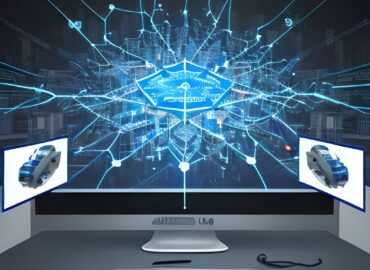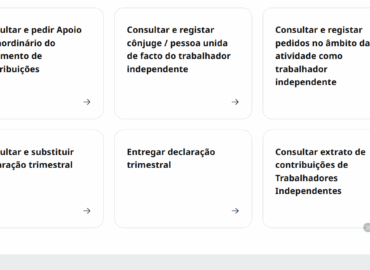Fonte / source & credits: https://giveitaspin.net/
O nosso modo de comunicação mudou. Não precisamos mais estar na frente dos nossos amigos para conversar ou planear o próximo fim de semana. Além disso, o nosso estilo de vida também passou por mudanças: temos mais acesso a informações graças à Internet e os aplicativos móveis fazem parte das nossas vidas.
Então, se o nosso estilo de vida não é mais o mesmo, por que continuamos a educar da mesma maneira? A educação precisa ser transformada para preparar os trabalhadores do futuro para a era da informação.
O que é o B-learning e o E-learning?
O ensino B-learning é aquele em que o aluno frequenta as aulas programadas, como na educação clássica, mas, por sua vez, possui uma plataforma online para desenvolver trabalhos, trabalhos de casa ou mesmo avaliações. Essa plataforma permite que se beneficie de um trabalho mais pessoal e escolha a hora e o lugar para aprender.
Como estamos a ver, é um tipo de aprendizado combinado. A aprendizagem e-learning é aquela em que o aluno não frequenta aulas presenciais e a sua aprendizagem é online na sua totalidade.O aluno em e-learning tem um papel ativo; primeiro, é ele quem gerencia seu tempo e planeia a sua processo aprendizagem. Em comparação com a educação clássica em que os alunos assistem às aulas com um horário específico e um programa estruturado, com dias para os testes, entrega de trabalho e exercícios… no tele-trabalho o aluno pode ter permissão para estudar o assunto no horário que se adequa você e realizar as avaliações e exercícios da mesma maneira. Ao mesmo tempo, ele deve aprender a autogerenciar-se e a planear.
Por outro lado, deve-se ter como requisito habilidades técnicas para gerir a plataforma de ensino e poder planear e ser seu próprio gestor em seu desenvolvimento. Junto com isso, seu papel é totalmente ativo no processo de aprendizagem, pois participa de fóruns, bate-papos, realiza atividades, contribui com ideias, etc. Resumidamente, na aprendizagem E-learning, o aluno é o protagonista de seu processo de aprendizagem.
O papel do professor também foi modificado. Em outras formações, tem o papel central: explica o conteúdo, planeia as avaliações e atividades a serem realizadas. No B-learning ou E-learning, o professor assume o papel de facilitador ou moderador. Desta forma, os alunos são capacitados para direcionar sua própria aprendizagem e, assim, facilitar o desenvolvimento de habilidades que serão úteis nas suas vidas profissionais, como planeamento, organização, auto-aprendizagem e gerenciamento de recursos.
E-learning 1.0 e E-learning 2.0
A principal diferença entre o e-learning 1.0 e o e-learning 2.0 é que este último está equipado com as “Redes Sociais”, que dão ao estudante a oportunidade de desenvolver as suas habilidades sociais e completar uma aprendizagem social através de várias ferramentas como wikis, blogs ou chats. No E-learning 1.0, o aluno ainda era um aprendiz passivo, pois ele não tinha ferramentas sociais.
A interação que os alunos têm com esses materiais é diferente do que eles tinham no E-learning 1.0, no qual eles só tinham acesso a um material limitado e não social. É verdade que, para poder participar deste tipo de E-learning, eles precisam ter certas habilidades em computação e novas tecnologias. É por isso que eles também precisam desenvolver essas competências, que, por sua vez, as servirão no mundo do trabalho digitalizado de hoje.
A Internet oferece a oportunidade de encontrar mais de uma fonte de informações ou ferramentas do mesmo assunto. Portanto, os estudantes deste século devem saber classificar, buscar informações e sintetizá-las para criar sua aprendizagem. Além disso, essa transformação na educação dá a oportunidade de desenvolver a criatividade que muitas vezes deixamos de lado na educação clássica e nos limitamos a exigir que os alunos reproduzam o que foi explicado pelo professor.

Our way of communicating has changed. We no longer need to be in front of our friends to have a conversation or to plan the next weekend. In addition, our lifestyle has also undergone changes: we have greater access to information thanks to the Internet, mobile applications are part of our lives.
So, if our lifestyle is no longer the same, why do we continue to educate in the same way? Education needs to be transformed to prepare the workers of the future for the information age.
What is B-learning and e-learning?
B-learning is one in which the student attends scheduled classes, as in classical education, but in turn, has an online platform to develop work, homework or even evaluations. This platform allows you to benefit from a more personal work and choose the time and place to learn.
As we can see, it is a type of combined learning. The e-learning learning is one in which the student does not attend face-to-face classes and their learning is online in its entirety.
The student in e-learning has an active role; First, it is he who manages his time and plans his learning process. In comparison with the classical education in which the students attend classes with a specific schedule and a structured program, with days for the tests, delivery of work and exercises … in the teletraining the student can be allowed to study the subject in the schedule that suits you and perform the evaluations and exercises in the same way. At the same time, he must learn to self-manage and plan.
On the other hand, must have as a requirement technical skills to manage the teaching platform and be able to plan and be their own manager in their development. Along with this, his role is fully active in the learning process as he participates in forums, chats, carries out activities, contributes ideas, etc. Briefly, in e-learning learning the student is the protagonist of their learning process.
The role of the teacher has also been modified. In other formations, it has the central role: it explains the contents, it plans the evaluations and activities to be carried out. In the b-learning or e-learning the teacher takes the role of facilitator or moderator. In this way, students are empowered to direct their own learning and thus, facilitate them develop skills that will be useful in their professional lives such as planning, organization, self-learning and resource management.
E-learning 1.0 and e-learning 2.0
The main difference between e-learning 1.0 and e-learning 2.0 is that the latter is equipped with the “Social Media” or social networks, which give the student the opportunity to develop their social skills and complete a social learning through various tools such as wikis, blogs or chats. In e-learning 1.0 the student was still a passive learner, as he did not have social tools.
The interaction that students have with these materials is different from what they had in e-learning 1.0 in which they only had access to a limited and not social material. It is true that to be able to participate in this type of e-learning they need to have certain computer skills and new technologies. That is why they must also develop these competencies, which in turn, will serve them in today’s digitalized work world.
The Internet gives you the opportunity to find more than one source of information or tools of the same subject. Therefore, students of this century must know how to classify, search for information and synthesize it to create their learning. In addition, this transformation in education gives us the opportunity to develop the creativity that many times in classical education we put aside and we limit ourselves to require students to reproduce what was explained by the teacher.




